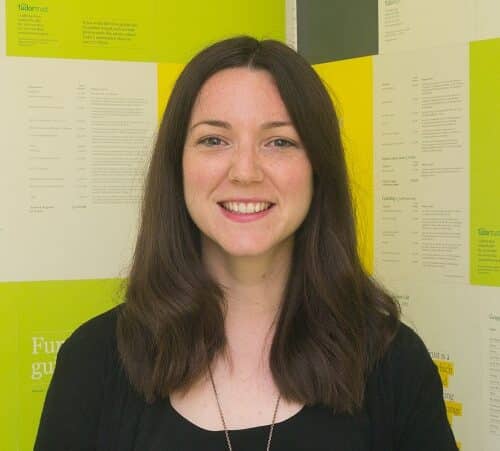
Responsive grant-making needs a proactive strategy
As part of our recent review of the Wellcome Trust’s Public Engagement Fund, we have been thinking about what it means to be a responsive grant maker.
Any funder devising a funding programme needs to make a series of critical decisions – what it is aiming to achieve, with whom and how. The impact of these decisions together forms the architecture of the grant-making programme, and critically influences both the sorts of grants made and the relationships established. As the business of grant-making has evolved, so too has the range of available grant-making models which allow for considerable differentiation in levels of engagement, collaboration and approach.
Whilst there is no standard definition of response mode funding, the Framing Paper for the IVAR Evaluation Roundtable in 2017 with its network of 60 funders, defined a responsive grant maker as ‘one whose leaning is to have grantees largely driving agendas. This includes accepting unsolicited proposals as well as having flexible project designs, proposal formats, and reporting’. Typically, foundations will define to some extent what is to be addressed, but allow significant latitude for how that issue will be tackled, taking the view that a funder’s role is to support action in a particular area, or at the grassroots, rather than working towards any particular outcome, and placing a significant emphasis on the relationship between funder and funded partner. A significant number of funders in the UK can be described as ‘responsive’ grant makers across all or some of their grant-making portfolios.
Responsive grant makers, particularly those without more tightly bound programme/initiative strategies recognise the challenges this brings – high applications and difficulty aligning to overall outcomes resulting in low success rates – a common concern for applicants and funders alike – and are exploring ways to address them. Questions include: how can we encourage appropriate applications but prevent applicants from wasting their precious time in applying when they are unlikely to be funded? Do our responsive grant-making processes help or hinder applicants? How can we make the most of the data available, when that data is being gathered or offered from quite diverse settings and contexts? Drawing on several reports relevant to the issue, and from conversations with high volume funders, we highlight some of the ways in which funders are addressing these questions.
Responsive funders frequently articulate their desire to reduce the number of ineligible applications or improve their quality without narrowing the focus of their programme or excluding certain applicants. Clear guidelines and criteria can help, but often do not fully address the problem. Other ideas and actions are needed. The Esmée Fairbairn Foundation has tackled this specific issue by upgrading its website to include an eligibility quiz co-designed with applicants and developed tighter guidelines and explanations of what it does and doesn’t fund. This has resulted in a drop of 27% of applications from 2,755 in 2016 to 2,023 in 2017.
The report The Possible, not the Perfect: Learning from funder responses to emergencies suggests that some of the ways of doing things that proved possible in an emergency could influence how funders behave in their day-to-day work. It reports that the funders involved felt that complex processes had become a deliberate, if unspoken, part of a strategy to manage application volumes but without proven effect on turn-down rates. The study found that simple, supportive application processes brought benefits to applicants and funders alike. This was achieved amongst other things through active outreach; a simplified application process; relationship building and conversation. Whilst these characteristics of emergency grant-making may not be suitable for all forms of responsive grant-making, there is value in funders reviewing how they may be able to develop more meaningful discussions and better-informed decision-making, without undermining accountability.
Whilst responsive grant-making is framed as open to all, the reality for many funders is that without extending reach deep into communities they serve, applicants may not be as diverse as hoped for. Some larger funders wishing to retain response mode funding but recognising they may be too distant from the groups and organisations they seek to attract, are working collaboratively with local grant makers to reach their intended audience. Comic Relief for example provides access to an open programme throughout the UK by devolving its small grants funds to several local grant makers to ensure better and more diverse reach and decision making closer to the ground.
Engaging with applicants early can also help manage the demands of high-volume, responsive grant makers. The National Lottery Community Fund (previously Big Lottery Fund) has recently shifted its approach to be a better connected and more flexible funder, building deeper, early relationships with applicants and grantees. It now offers applicants the opportunity to begin the application process in a variety of different ways including through a conversation. Feedback suggests that being able to talk to potential funders at the application stage helps build applicants confidence in a process and their ability to ask for what they need to do a good job. It can help ensure that applications are eligible and align well with the its overall objectives, thus reducing time and effort on both sides. As can be seen with the NLCF, these benefits need not be confined to funders with tight geographical or subject boundaries. Progress can be made in developing relationships by stepping out from behind process and actively promoting cultures and practices that put more power into the hands of applicants and grantees.
Enabling organisations to determine the agenda through responsive grant-making is an empowering act. But it is not without challenge. Responsive grant-making needs a proactive strategy to ensure reach, and a set of target outcomes to ensure alignment with funder’s objectives. Without these, application numbers can become unmanageable, ineligible applications waste time, those outside the usual funding networks may be disadvantaged and there are fewer big questions around which more focused learning (and thus data collection) can be hung. As part of that, the relationship with grantees is critical:
‘Responsiveness should not be just a passive philosophical stance – “the partner always knows best” – but rather be characterized by dialogue, willingness to learn, and an ability to observe and to identify and correct assumptions. Agendas should be explicit but flexible, with room for adjustment based on learning.’


